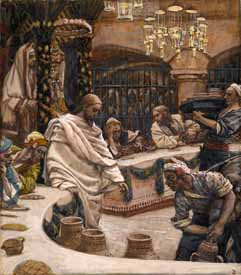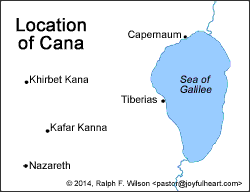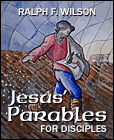Free E-Mail
Bible Studies
Beginning the Journey (for new Christians). en Español
Old Testament
Abraham
Jacob
Moses
Joshua
Gideon
David, Life of
Elijah
Psalms
Solomon
Songs of Ascent (Ps 120-135)
Isaiah
Advent/Messianic Scriptures
Daniel
Rebuild & Renew: Post-Exilic Books
Gospels
Christmas Incarnation
(Mt, Lk)
Sermon on the Mount
(Mt 5-7)
Mark
Luke's
Gospel
John's Gospel
7 Last Words of Christ
Parables
Jesus and the Kingdom
Resurrection
Apostle Peter
Acts
The Early Church
(Acts 1-12)
Apostle Paul
(Acts 12-28)
Paul's Epistles
Christ Powered Life (Rom 5-8)
1 Corinthians
2 Corinthians
Galatians
Ephesians
Vision for Church
(Eph)
Philippians
Colossians,
Philemon
1
& 2 Thessalonians
1 & 2 Timothy,
Titus
General Epistles
Hebrews
James
1 Peter
2 Peter, Jude
1, 2, and 3 John
Revelation
Revelation
Conquering Lamb of Revelation
Topical
Glorious Kingdom, The
Grace
Great Prayers
Holy Spirit, Disciple's Guide
Humility
Lamb of God
Listening for God's Voice
Lord's Supper
Names of God
Names of Jesus
Christian Art
About Us
Podcasts
Contact Us
Dr. Wilson's Books
Donations
Watercolors
Sitemap
 James J. Tissot, 'The Marriage at Cana' (1886-94), gouache on paper, 9x7.8", Brooklyn Museum, New York. |
Jesus has been in Judea. Now the scene shifts from Judea in the south to the north in Galilee, the region in which Jesus grew up. Jesus is at a wedding in Cana, with his disciples and his mother. It is a "big deal," with many guests and festivities planned to last for days celebrating the new couple.
John selects this incident, not found in the other Gospels, to begin to reveal who Jesus is.
Invited to the Wedding (2:1-2)
"1 On the third day a wedding took place at Cana in Galilee. Jesus' mother was there, 2 and Jesus and his disciples had also been invited to the wedding." (2:1-2)
Apparently, Jesus' family was friends (or relatives) of the bride or groom, because Jesus' mother and brothers (2:12) were there; Jesus and his disciples were also invited.
Cana in Galilee
 Location of Cana (larger map) |
Cana (literally "place of reeds") is in the hills of Galilee (2:1), though the exact location isn't certain. Church tradition identifies it as Kefr Kanna, about four miles northeast of Nazareth on the road to Tiberius on the Sea of Galilee, but perhaps the most likely site is Khirbet Kana, an ancient ruin about 8 miles northeast of Nazareth, which served as the military headquarters for a time of Jewish historian and general Josephus [56](see map) Jesus probably came to Cana accompanied by Nathanael, since it is Nathanael's home village.
Marriage Customs in Jesus' Day
Marriage in Jesus' day begins with a betrothal up to a year before the marriage celebration. The man and woman enter into a binding agreement to marry, more binding than our "engagement" in the West. The man gives the bride's father a bridal gift, a form of compensation to the father (some of which becomes a dowry the father gives to the daughter at the marriage to help provide economic stability to the marriage bond). The couple doesn't live together or consummate the marriage at their betrothal, though they are considered husband and wife, and the bond cannot be broken without divorce.
A marriage in this culture is a celebration. The groom and his friends go to the bride's home, and then escort the bride in a festive procession to the groom's home, where a grand celebration takes place. There is probably an exchange of vows and some kind of religious ceremony, though none of these details survive from the first century AD. The groom gives his bride gifts. After the marriage feast, the bride and groom enter the nuptial chamber and the marriage is consummated.
The festivities go on, however, sometimes for a week or more, if the groom's family can afford it. Friends and family will be coming from afar, so weddings are occasions where family connections are renewed over food and drink.
The New Testament has a number of references to weddings and wedding feasts.[57]Indeed, the concept of the Church as the Bride of Christ is hinted at in the Gospels and fulfilled at the Marriage Supper of the Lamb in Revelation 19:6-9.
Q1. (John 2:1-2) Why are we sometimes "too busy" to spend
time with friends and relatives? What does Jesus' attendance at this wedding
tell us about him? How can we apply that learning in our own personal lives?
https://www.joyfulheart.com/forums/topic/1402-q1-time-for-friends/
They Run Out of Wine (2:3)
The wedding Jesus and his disciples are attending, however, has a serious problem. They had wine enough to begin the festivities -- but before long they run out of wine!
"When the wine was gone, Jesus' mother said to him, 'They have no more wine.'" (2:3)
We might not appreciate the problem. A small loan perhaps and a quick trip to the store might solve the problem without any fuss.
But enough wine for days of festivities would require a great deal of wine, and there is no way to get enough quickly. And to supply only water for the festivities would be considered a severe social embarrassment for the groom's family -- especially at a time when the groom's ability to be a good provider is so clearly in view. This is a crisis!
Mary Asks Jesus to Solve the Problem (2:4-5)
Mary, who is perhaps especially close to the groom's family, and thus sensitive to their need, not only mentions it to Jesus, but suggests that he solve their problem.
"3b Jesus' mother said to him,
'They have no more wine.'
4 'Dear woman, why do you involve me?' Jesus replied.
'My time has not yet come.'
5 His mother said to the servants,
'Do whatever he tells you.'"
(2:3b-5)
Jesus addresses her as "woman" (NRSV, KJV), which the NIV rightly softens a bit to, "dear woman." You'd expect him to address her as "Mother," but he doesn't. Jesus uses this same expression from the cross, when he assigns the care of his mother into the hands of the Apostle John (19:26). Perhaps this term "woman" (which was not nearly so cold or unkind as it might sound in English) was designed to separate his family responsibilities from his ministry responsibilities. You see Jesus doing something similar when his mother and brothers seem to impose upon him by interrupting him while he is teaching a crowd of people (Mark 3:31-35).
Jesus answers with a question: "Why do you involve me?" (NIV), or, more literally, "What concern is that to you and to me?" (NRSV).[58]
You might wonder why Mary is motivated to involve Jesus in this way. Though the text doesn't tell us, she probably knows that Jesus can help. She has lived with him for thirty years and knows that he is not only resourceful in practical matters, but probably has seen him perform miracles in the context of the family. She knows Jesus is the Christ, the Son of God. And perhaps she wants to show him off, a bit -- who knows? At any rate, she specifically mentions the problem to Jesus in a way that leaves him no doubt that she expects him to take care of it.
Jesus explains, "My time[59]has not yet come" (NIV) or "My hour has not yet come" (NRSV, KJV). Jesus has a clear sense throughout his ministry of the particular "hour" or "time," at which point he is to fulfill his purpose as the sacrifice for the sins of all. We see this phrase, either on his lips or by the narrator, several times: "his time had not yet come" (John 7:6, kairos; 30; 8:20). At the end of his ministry, the hour has arrived for him "to be glorified" (12:23; 17:1), as he put it, for him "to leave this world and go to the Father" (13:1).[60]
Throughout the Gospels, we see Jesus' clear awareness that he must not plunge into fame too quickly. That is why he tells people on certain occasions not to tell everybody about their miracle (Mark 1:43-45; 7:36) or that he is the Messiah (Mark 8:29-30 = Matthew 16:20; Mark 9:9 = Luke 9:36 = Matthew 17:9). His hour had not yet come, and manipulating publicity would force that "hour" to come before he can train his disciples for their Kingdom work. Jesus' eyes were clearly on his chief purpose, but he isn't in a hurry. There is no rush.
Here, at the very beginning of his ministry, is the same concern that the spectacular not overtake his true path. So he tells his mother, "My time has not yet come" (2:4).
It's almost like his mother isn't listening or heeding what he is saying, for she pushes right ahead in her quest to rescue the wedding party from disgrace.
"His mother said to the servants, 'Do whatever he tells you.'" (2:5)
As I read this, I ask myself: How many times I have pushed through my own goals without heeding Jesus' cautions?
Nevertheless, Jesus accedes to her wishes. Perhaps to be a dutiful son, and perhaps because he senses that the Father has a purpose in it.
Q2. (John 2:3-5) Why do you think Mary pushes Jesus to
solve the wedding host's problem? Are her words to Jesus appropriate? Would you
categorize Jesus' reply as a rebuke? If so, why does he go ahead with the
miracle?
https://www.joyfulheart.com/forums/topic/1403-q2-marys-nudge/
Six Stone Jars (2:6)
"Nearby stood six stone water jars, the kind used by the Jews for ceremonial washing, each holding from twenty to thirty gallons."[61](2:6)
I can imagine pottery water jars, like the woman at the well used to carry water into town. But the jars described here are not pottery, but stone. Nobody was carrying water in these. Such stone jars have been found in Israel. In the so-called "Burnt House" in the Jewish Quarter of the Old City of Jerusalem, archaeologists found several stone water jars from the first century AD. They are 2 to 2.5 feet high (65-80 cm.), shaped from limestone on some kind of very large lathe. They held about 17 gallons (80 liters), and were covered by a flat piece of stone. In Capernaum, several stone jars from the fourth century AD have been found in the synagogue there.
John notes that such jars were used to hold water for ceremonial washing or purification.[62]Before a meal, servants (or perhaps the host) would pour water over the hands of each of the guests. Mark explains the custom:
"The Pharisees and all the Jews do not eat unless they give their hands a ceremonial washing, holding to the tradition of the elders. When they come from the marketplace they do not eat unless they wash. And they observe many other traditions, such as the washing of cups, pitchers and kettles." (Mark 7:3-4)
While the strict Pharisees practiced this, not all of Jesus' disciples were so scrupulous (Mark 7:2, 5; John 3:25). This was not something required by Scripture[63], but a "tradition of the elders."[64]Nevertheless, the home where the wedding is being held, has on hand six stone jars (probably some borrowed from neighbors for the occasion), so that not even the strictest Jews will be offended.
Full to the Brim (2:7)
Our story picks up part-way into the multi-day festivities, so quite a bit of water has already been drawn from the jars to rinse the hands of guests at each meal.
"Jesus said to the servants, 'Fill the jars with water'; so they filled them to the brim." (2:7)
To refill six stone jars, each of which could hold 20 to 30 gallons would require the servants to make many, many trips to the town well and back, considering that their smaller water jars might hold a gallon or two. When they finish, they report back to Jesus for further instructions.
Water to Wine (2:8-9a)
It may have taken several hours for them to comply with Jesus' somewhat strange request.
"8 Then he told them, 'Now draw some out and take it to the master of the banquet.' They did so, 9 and the master of the banquet tasted the water that had been turned into wine. He did not realize where it had come from, though the servants who had drawn the water knew." (2:8-9a)
When did the miracle occur? Probably between the time the servants had filled the water jars and the time the chief servant drew some to take to the master of the banquet.
Saved the Best for Last (2:9b-10)
Who is the "master of the banquet"?[65]In classical Greek this was the "the slave who was responsible for managing a banquet," in which case we might term him the "head waiter, butler." But since he doesn't seem to be aware of the wine shortage situation nor the actions of the other servants -- and he is able to summon the bridegroom -- I think it's likely that he was one of the guests who was appointed toastmaster or "president of the banquet."[66]
Here I indulge my imagination a bit. The master of the banquet breathes in the wine in the cup he has been given. Ah, excellent bouquet! Then he tastes the wine, sloshes it around in his mouth, then swallows, detecting the smooth finish. Amazing wine! Then he goes to the bridegroom, takes him aside, and speaks to him quietly.
"9b Then he called the bridegroom aside 10 and said, 'Everyone brings out the choice wine first and then the cheaper wine after the guests have had too much to drink; but you have saved the best till now.'" (2:9b-10)
The normal time for fine wine would be at the beginning of the party when people haven't eaten and drunk much, when their palates are "fresh" -- and when they aren't too drunk to notice! The master of the feast is a keen observer of normal human behavior, and is surprised to get such good wine so late in the feast.
The last line of the narrative gives the punch line -- "You have saved the best till now" (2:10b). The point, of course, is that the wine Jesus has created is not only abundant -- 150 gallons or so -- but the finest of wine!
Q3. (John 2:6-10) Why do you think alcoholics are quick
to point out this miracle? Which is wrong: drinking wine or drunkenness? How can
we avoid excesses and still enjoy God's good gifts?
https://www.joyfulheart.com/forums/topic/1404-q3-drinking-vs-drunkenness/
Q4. (John 2:6-10) Why did Jesus perform this miracle
behind-the-scenes? Who was he trying to protect? What does the quantity of the
wine tell us about Jesus' glory? What does the quality of the wine tell us about
Jesus' glory?
https://www.joyfulheart.com/forums/topic/1405-q4-quiet-miracle/
The Meaning of this "Sign" (2:11)
"This, the first of his miraculous signs, Jesus performed at Cana in Galilee. He thus revealed his glory, and his disciples put their faith in him." (2:11)
"Miraculous signs" (NIV), "signs" (NRSV), "miracles" (KJV) is the plural of sēmeion, "a sign or distinguishing mark whereby something is known, sign, token, indication." Here, "an event that is an indication or confirmation of intervention by transcendent powers, miracle, portent."[67]For John, these wonders are not just miracles, but signs that point to who Jesus actually is. According to verse 11 this sign had two functions:
- Reveals his glory. The teacher is more than he seems, and every so often the massive Shekinah glory of God shines out.
- Inspires faith. It's important to observe that in his disciples, the miracles inspired faith, but in his enemies they inspired only a determination to eliminate him (Mark 3:6; Matthew 12:14).
Toward the end of his Gospel, John explains,
"30 Jesus did many other miraculous signs in the presence of his disciples, which are not recorded in this book. 31 But these are written that you may believe that Jesus is the Christ, the Son of God, and that by believing you may have life in his name." (20:30-31)
Sēmeion is one of the characteristic words used in John (2:11, 18; 4:54; 6:2, 14, 26, 30; 7:31; 9:16; 10:41; 11:47; 12:18, 37; 20:30). In the early part of his Gospel, John designates this as the first sign. Some preachers fancy seven signs in John (after all, seven is the number of perfection), but if you count he did more than seven signs. But here are the "seven."
- Changing the Water into Wine (2:1-11)
- Healing of the Nobleman's Son (4:46-54)
- Healing at the Pool of Bethesda (5:1-9)
- Feeding the Multitude (6:1-14)
- Walking on the Water (6:15-25)
- Healing the Man Born Blind (9:1-8)
- Raising Lazarus from the Dead (11:1-46)
On to Capernaum (2:12)
The narrative of the changing the water into wine concludes with a transitional verse:
"After this he went down to Capernaum with his mother and brothers and his disciples. There they stayed for a few days." (2:12)
Jesus goes to Capernaum not only with his disciples, but with his whole family. From the Synoptics we learn that Jesus has moved from Nazareth to Capernaum (Matthew 4:13) and considers it his home (Matthew 9:1). Apparently, some of the disciples who were originally from Bethsaida (1:44) now live in Capernaum (Mark 1:29), a fishing village on the northwest shore of the Sea of Galilee.[68]
"Spiritual" Interpretations
The simplest explanation of the changing of the water into wine is given in 2:11, that Jesus' miracle shows his glory and inspires faith. It is a "sign" pointing to who he is. That would be the literal interpretation.
However, there is a different approach to interpretation that dominated the Church for many centuries, known as "spiritual interpretation," that seeks to find the inner, hidden meaning in Jesus' parables and miracles.[69]To illustrate the extremes of this approach, here are a few "deeper" interpretations:
- The marriage represents the wedding of Christ and his bride, the church.
- The six stone water jars represent the Jewish traditions. Six is the number of incompleteness, but seven is the number of completeness and perfection.[70]
"This incident illustrates at once the poverty of the old dispensation with its merely ceremonial cleansing and the richness of the new, in which the blood of Christ is available for both cleansing and drink."[71]
Yes, perhaps it illustrates those things, but did John intend it so? I doubt it.
Lessons for Disciples
 Entire study is available in paperback, Kindle, and PDF formats. |
These are the some of the things I think we disciples can learn from this story.
- Celebrations with family and friends are important to Jesus -- and should be to us. We shouldn't feel ourselves too spiritual or too busy for such earthly joys and responsibilities.
- It's possible to try to push God into acting on our behalf. It's best to be less pushy than Jesus' mother, or we may be rebuked like she was.
- Jesus is not against wine. It's drunkenness that is wrong, the misuse of God's gifts, not wine itself.
- Miracles need not be showy or even trumpeted to others. To meet the need is enough. Jesus was not a showman.
Jesus' ministry is now underway with an almost behind-the-scenes glimpse at his glory. The bulk of Jesus' ministry in Galilee is chronicled by the Synoptic Gospels, while John focuses more on Jesus' Judean ministry that we'll see in the next lesson.
Prayer
Thank you, Lord, for allowing me to see this amazing behind-the-scenes ministry of Jesus to meet very human needs. Please give me a compassion for ministry in everyday life so that I can emulate him. In Jesus' name, I pray. Amen.
Key Verses
"When the wine was gone, Jesus' mother said to him, 'They have no more wine.' 'Dear woman, why do you involve me?' Jesus replied. 'My time has not yet come.' His mother said to the servants, 'Do whatever he tells you.'" (John 2:3-5, NIV)
"Everyone brings out the choice wine first and then the cheaper wine after the guests have had too much to drink; but you have saved the best till now." (John 2:10, NIV)
Endnotes
[56]Josephus, Vita, 16, 41. Josephus described the spot as "Plain of Asochis, that is the Bet Netufa Valley," which would suit Khirbet Kana. Robert H. Mounce, "Cana," ISBE 1:585. Urban C. von Wahlde ("Archaeology and John's Gospel," in Jesus & Archaeology, pp. 538-542) sees the issue as yet unresolved, while Peter Richardson ("Khirbet Qana and other Villages as a Context for Jesus," in Jesus & Archaeology, pp. 120-144) sees scholarly opinion as shifted to Khirbet Qana as the New Testament Cana, and cites extensive excavations there since 1998.
[57]The Parable of the Wedding Banquet (Matthew 22:1-14; cf. Luke 14:15-24), the Parable of the Ten Virgins (Matthew 25:1-13), and Jesus teaching at a luncheon about humility (Luke 14:1-14) and the reference to a master delayed in returning from a wedding feast (Luke 12:36).
[58]Tis is an interrogative pronoun, referring to someone or something -- "Who? Which (one)? What?" Literally the phrase means, "What is it to me and to thee?" (Robertson, Word Pictures).
[59]The noun is hōra, "hour," here in the figurative sense of "a point of time as an occasion for an event, time" (BDAG 1103, 3).
[60]The Synoptics bring another "hour," the period "when darkness reigns" (Luke 22:53). It began in the Garden of Gethsemane, "Look, the hour is near, and the Son of Man is betrayed into the hands of sinners" (Matthew 26:45).
[61]"Gallons" (NIV, NRSV), "firkins" (KJV) is metrētēs, a liquid measure of about 40 liters, "measure." It is similar to the Hebrew bath, containing 72 sextarii or pints = 39.39 liters, or about nine gallons (BDAG 643). The British firkin was one-fourth of a barrel.
[62]"Ceremonial washing" (NIV), "rites of purification" (NRSV), "purifying" (KJV) is katharismos, "cleansing from cultic impurity, purification" (BDAG 489, 1).
[63]The only things Scripture says is that Aaron and the priests were required to wash their hands and feet before serving in the temple (Exodus 30:19-21; 40:31).
[64]The Mishnah (which contains these traditions) includes a tractate "Yadayim (hands)" with four chapters on the purification of hands.
[65]Architriklinos, BDAG 139.
[66]Liddell-Scott. So Morris, John, pp. 183-184. Perhaps here the architriklinos is the same as the sumposiarchos as described in Wisdom of Sirach 32:1.
[67]Sēmeion, BDAG 920, 2aα.
[68]The exact location of Capernaum has been debated. The most likely location is Tell Ḥûm, a site which contains the ruins of a fourth century synagogue (R.H. Mounce, "Capernaum," ISBE 1:610).
[69]"Spiritual interpretation" takes its cue from early Christian philosopher and theologian Origen of Alexandria (184-253 BC). In this spiritual interpretation approach, a narrative, a parable, a teaching is an allegory of a deeper truth.
[70]Of course, the story doesn't end with seven -- so this probably has nothing to do with six and imperfection.
[71]Barrett, John, p. 192.
Copyright © 2025, Ralph F. Wilson. <pastor![]() joyfulheart.com> All rights reserved. A single copy of this article is free. Do not put this on a website. See legal, copyright, and reprint information.
joyfulheart.com> All rights reserved. A single copy of this article is free. Do not put this on a website. See legal, copyright, and reprint information.
 |

|
In-depth Bible study books
You can purchase one of Dr. Wilson's complete Bible studies in PDF, Kindle, or paperback format -- currently 48 books in the JesusWalk Bible Study Series.
Old Testament
- Abraham, Faith of
- Jacob, Life of
- Moses the Reluctant Leader
- Joshua
- Gideon
- David, Life of
- Elijah
- Psalms
- Solomon
- Songs of Ascent (Psalms 120-134)
- Isaiah
- 28 Advent Scriptures (Messianic)
- Daniel
- Rebuild & Renew: Post-Exilic Books
Gospels
- Christmas Incarnation (Mt, Lk)
- Sermon on the Mount (Mt 5-7)
- Luke's Gospel
- John's Gospel
- Seven Last Words of Christ
- Parables
- Jesus and the Kingdom of God
- Resurrection and Easter Faith
- Apostle Peter
Acts
Pauline Epistles
- Romans 5-8 (Christ-Powered Life)
- 1 Corinthians
- 2 Corinthians
- Galatians
- Ephesians
- Philippians
- Colossians, Philemon
- 1 & 2 Thessalonians
- 1 &2 Timothy, Titus
General Epistles
Revelation
Topical
